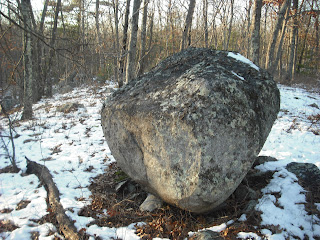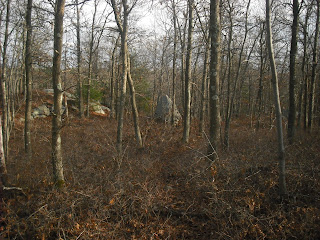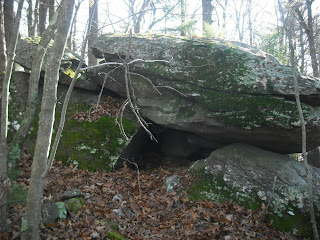Just below the crest of this hill stands this strange enclosure.
There is enough room to stand between the smooth bedrock wall and the stacked slabs in the center of the photograph. Once inside the little enclosure, one can look out between two standing slabs and see a wonderful view to the southwest.
Directly in front of the enclosure is a supported slab. There are only a few rocks underneath it.
Here is the view from directly above this structure, showing the slabs. The top edges of the enclosure slabs leaning against bedrock are visible in the center of the photo.
Bent trees indicate the importance of this structure.
Since there is no good vantage point for a photograph, I have drawn an exploded view of the enclosure. The bedrock wall is pushed back.
Perhaps this enclosure had some spiritual purpose, suggested by its facing southwest. Unfortunatly, there are few structures left on top of this hill. Industrious vandals have converted a a cairn into a fire ring with benches.
Some rocks remain on top of the outcrop behind the ruined cairn.




















































